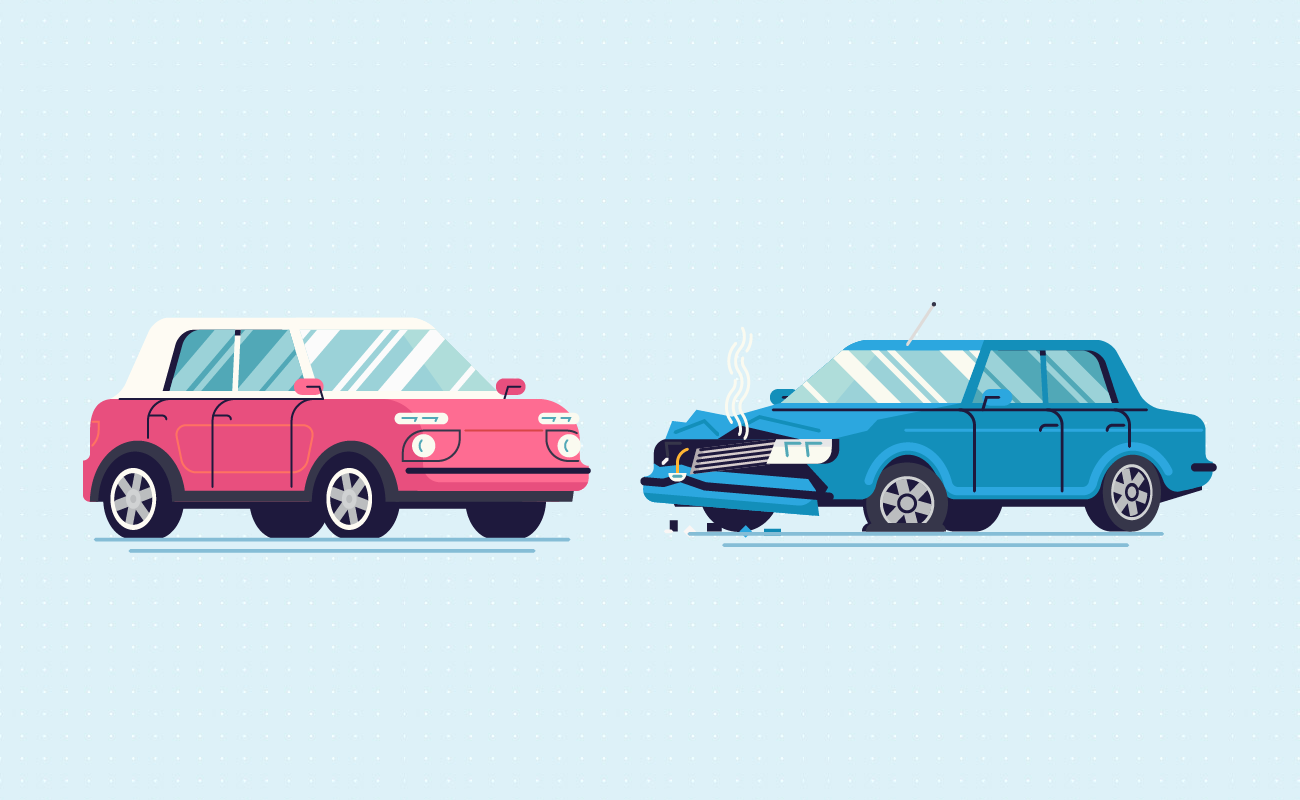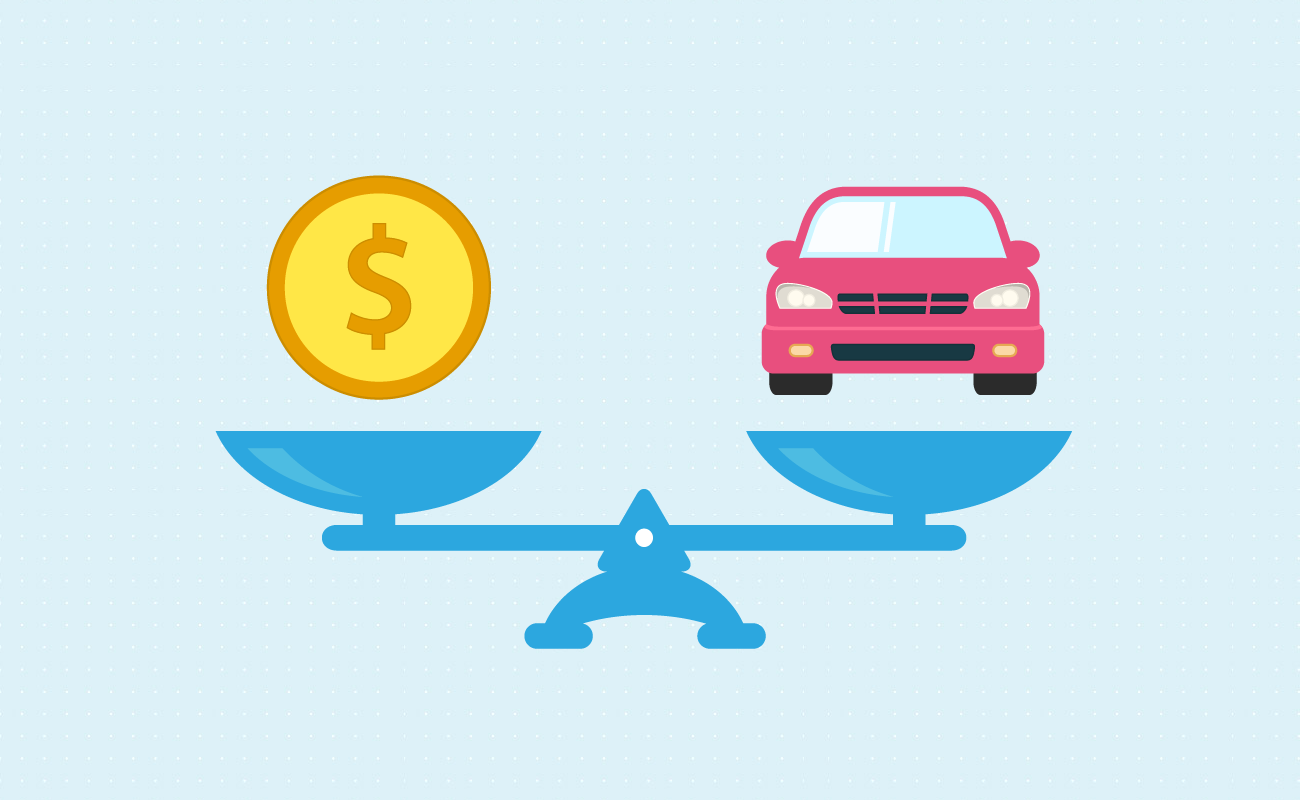Auto Loans
Affordability
Loan Payment Options
Biweekly Payments
Compare Rate & Term
Rebate vs Low Interest
Home Equity Loans
Lease or Buy
 Auto Ownership Cost Comparison Calculator
Auto Ownership Cost Comparison CalculatorMost vehicle buyers do not consider all of the expenses associated with their purchase. This calculator helps you quickly compare two scenarios side-by-side, enabling you to quickly account for differences in the cost of fuel, maintenance, insurance, depreciation, and other costs that often seem hidden until after the purchase is made.
If you plan to use similar financing terms or are comparing similar vehicles you can use the "Copy 1 to 2" feature to use the first vehicle's settings as your defualt for the second purchase until you change whichever settings are different.
Guide published by Jose Abuyuan on June 27, 2020

The need to compare prices and quality drives the auto review culture. It drives TV shows and websites dedicated to describing the pros and cons of car models. This information can be overwhelming at first. Learning from them, however, will pay off once it’s time to buy your new car.
Price is perhaps the most important of these factors. This isn’t restricted to the sticker price of the vehicle. These should also include the lifetime costs such as maintenance and insurance. You’d also need to know whether all the money spent was worth it. Did you choose a car for monetary savings or did you choose based on your needs and comfort? Paying more for better quality can help you save money further down the line.
Research is the hallmark of sensible vehicle shopping. An expense as big as a car has even lesser room for frivolity than other consumer goods. It is crucial to know both what you can afford and the best quality you can get. We have calculators that can help you measure the fuel and operational costs of vehicles. Once you’re done running through the numbers, now is the time to compare them.
Finding out what you need is a two-way street. On one hand, you must work toward finding a car that fits your budget. Anything that is nonessential should be put in low priority. On the other, you must also find a car that meets as many of your most crucial needs as possible within your budget. Put meeting your personal needs over everything else. Saving money means nothing if you experience inconvenience or discomfort in the process.
It could be hard to decide whether a specific feature is a need or a want. You need a car that you and your family can comfortably fit in. But you want a car with seat warmers. While it would be nice to have the latter, you can do without it if it’s too expensive. Ask yourself the tough questions: Why do you need the car? What added functions does the car need to have? Often, you can pare it down to the following set of primary essentials:
If you must spend extra on something, choose one that adds comfort to your driving experience. If you live in a cold place, paying extra for seat warmers might not be a bad deal. You will be using the car a lot, after all.
Pigly's Tip!
You might consider fuel efficiency, maintenance savings, and insurance costs as essential features. And in a sense, they are. Getting a car with all three of these traits, however, is difficult. You would need to give up one to meet the others. Sometimes, power is what you’d need. You might give up some fuel efficiency to carry heavier loads. Other times, you might give up some tax savings to slash your fuel and maintenance bills. When faced with this scenario, choose the option that lets you save more money.

One thing you should always remember is that being cheap is not being frugal. By skimping on quality, you may end up wasting more money in the long run. If you buy poor quality “economy” items, you end up wasting more money over time. The same goes for autos. If you bought a junker, you’ve wasted money on constant repairs, lost time, and general discomfort. You’re supposed to spend money on things that make your life better. “Savings” are a hollow recompense for everything you stand to lose by going cheap and crappy. It’s better to save more by paying for better quality up front.Frugality vs. Cheapness
![]()
Big cars are expensive. Small cars are cheap. It seems simple enough. But there’s more to vehicle size than meets the eye.
Size is usually associated with frivolity. It conjures up images of action stars buying sports utility vehicles as a way to show off. This tradition continues to some extent today, though not to the extent it once did in the mid-2000s. But this isn’t the only reason why people would choose to go big. Larger vehicles are often seen as safer in crashes and are often easier to insure as a result. Driving in a large vehicle may make you feel safer on the road.
But which size is really worth it? It depends on your lifestyle. If you live in the city, a larger vehicle might be too much of a liability. If you’re starting out or have a small family, you might not even need a lot of that extra room. On the other hand, the extra space that comes with bigger cars can come in handy as your family grows. A family van can comfortably seat a family of four or five plus luggage. Entrepreneurs and outdoor enthusiasts will also appreciate the extra hauling capacity offered by a light truck.
A persistent myth from the olden days is that larger vehicles are gas guzzlers. In the past, this was true. The emergence of the subcompact came from the need to save fuel. New lightweight materials and technology have bucked this old trend. Today, size is no longer an obstacle to fuel efficiency. You can find large vehicles with excellent fuel economy ratings.

Perhaps no other question about cars is as big as choosing between new and used. You might be torn between the low prices of pre-owned vehicles and the trustworthy reliability of new ones. Both types of dealership have the rather unfortunate reputation for shady practices. And these didn’t come out of the aether, either, so buyer beware. Before settling on any dealer, find out more about their reputation.
Pre-owned cars trump new ones in price. You can easily afford a used car with cash you’ve saved up. That same amount might barely be enough for the down payment. With that, you wouldn’t even need to worry much about monthly payments. A slightly used pre-owned vehicle performs almost as well as a new vehicle but at a fraction of the cost. They also depreciate much less than new cars.
One of the big drawbacks of used cars is that they don’t come with a warranty. They’ve also already had some mileage to them. You can never be completely sure how reliable your used car is. New cars, meanwhile, are under warranty and have no prior mileage. Their longer lifespan also means they wouldn’t cost as much to maintain over the long run. In the right circumstances, you can even get a new car at a bargain.
If the option presents itself, see if you can snag a good deal on certified pre-owned vehicles. These slightly used cars come with similar guarantees and warranties as new cars. Their mileage, meanwhile, translates to a much lower market price. You can save a lot of a new model by buying certified pre-owned. The only drawback is that you might not have the luxury of choice.
Leasing companies often have a large inventory of leased electric vehicles. They expect that those with electric leases would opt to buy them, but they usually do not. This is because electric vehicles have a low resale value. Battery technology advances fast. Thus, better electric cars enter the market much faster.
If you want to buy an electric vehicle outright, one of your best bets is to buy one secondhand. Pre-owned electric cars are cheaper and are as reliable as their new counterparts. Leasing is considered an even better deal for electric users. You’re not stuck with battery degradation this way. You do miss out on the tax credits from buying newer electrics, though.
Never skimp on your personal safety. Look for a car model known for its external and internal durability. These need not be big cars. Many new vehicles have enough safety systems in them to keep you safe in many situations. Look for the following traits when selecting a vehicle for safety:

Safer cars are much cheaper to insure. The higher your car’s perceived safety rating, the better the insurance rates you can get. As a rule, sports utility vehicles and family vans have lower interest rates than subcompacts and sports cars. However, there are exceptions. Insurers often look toward the vehicle model’s accident statistics to decide. Often, this leads to some models to have a much higher insurance rate than others in their class. If your car has great safety features, it can also receive better insurance rates.

Fuel and scheduled maintenance are part of your car’s lifetime expenses. A car that doesn’t take much money to refuel and maintain will save you a small mint. Moreover, a well-maintained car will take longer to be decommissioned. You can keep using your car for years and years without worrying about it much.
A critical factor in selecting the right car for your needs is the length of your commute. This will influence the amount of mileage you might put in your car and how much fuel it would consume. You also want to choose a fuel efficient car to hedge against fluctuations in fuel prices. Price hikes won’t affect you too much if you never used a lot of fuel in the first place. Moreover, fuel economy is linked to the amount of pollution you produce. A fuel efficient car is the best choice for the eco-conscious frugal motorist.
What defines “fuel efficient” is dependent on where you’ll spend most of your commute. Do you live in the city or the suburbs? How far is your workplace from your home? How bad is the congestion there? All these will decide whether you can save more fuel using a gas engine, a hybrid or electric, or a diesel engine. As a rule, diesel engines are more efficient over long distances. The others, meanwhile, are more efficient in city driving conditions. Read our guide on our fuel mileage calculator to learn more.

Maintenance is another matter. Electrics, hybrids, and diesel vehicles all cost less to maintain than a gasoline-powered car. These have fewer moving parts that you would need to replace. Cheaper, common cars are also easier to maintain because their parts cost less in general. A classic car’s parts may be out of production. Luxury cars may have specialist parts that are hard and expensive to get. Cars that are easier to repair are often much cheaper to insure.
Cheap, however, doesn’t always mean reliable. An absolute junker of a used car can have abysmal maintenance costs and still be unreliable. As would an inexpensive new lemon. When selecting used cars, watch out for those with more mileage behind them. The savings you make on your initial purchase might just cost you a fortune on repairs.
Brands with reputations for dependability are your best bets. The Toyota Camry does not have the visual panache as an Aston Martin DB5, but they get the job done well.

New or used, the best types of car are late-models from the previous year. These are less likely to be lemons than their early-run counterparts.
Now that the essentials are out of the way, examine what other optional things you would want in a car. What shape do you prefer? What extra add-ons are you prepared to pay for? What are you ready to live without?
Marketing bombards motorists with all the nifty features their modern car could do. Supercars can be exceptionally egregious in this regard. Parking assistance seems nice and all, but not everyone has a rich friend named Tony to lend you a car like that. Most of the add-ons you can afford are simple gimmicks that can make your ride more comfortable or convenient. Or they could just make your car look cooler.
Aesthetic and optional considerations should be the last things you consider. Select a range of options and rank them according to what you want versus what you can live without. Sometimes, the cars that you can afford do not come in the specific shape or color that you want. If you’re keeping the car for the long haul, you could always have your car repainted or retrofitted later.
Doing your homework is crucial to finding the ideal vehicle for your needs and budget. Read up on auto reviews and see what everyone else is saying about a specific model. Learn its average prices and compare them online. A little extra research can help you find a car that meets most of your needs at a price you can afford.
When comparing cars, consider their lifetime costs altogether. How much can you stand to save by choosing one car over the other? Even cars that have similar prices may have different operational costs. Our calculator above can help you compare the lifetime costs of owning two vehicles.
To give you an example, see the table below. Let’s say you want to buy a new vehicle and found two dealers offering the same price, make and model. One dealer is offering a higher interest rate with a longer repayment term.
| Purchase Info | Car 1 | Car 2 |
|---|---|---|
| Total price of the car, including options | $30,000 | $30,000 |
| Sales-tax percentage | 7.35 | 7.35 |
| Down payment amount | $5,000 | $5,000 |
| Financing rate (APR %) | 7.9% | 10.5% |
| Loan term in months | 60 | 72 |
| Years you expect to use the car | 7 | 7 |
Based on on the example above, Car 1 has a 7.9 percent interest rate, which is lower compared to 10.5 percent interest on Car 2. Option 1’s repayment term is 60 months (5 years), while Car 2 will take 72 months (6 years) to pay off. The table below shows similar operating expenses.
| Operating Expenses | Car 1 | Car 2 |
|---|---|---|
| Annual licensing cost | $137 | $137 |
| Annual insurance premium | $850 | $1,000 |
| Expect miles to drive car per year | 1,500 | 1,500 |
| Vehicle’s est. Miles Per Gallon rating | 22 | 22 |
| Local cost of one gallon of gasoline | 2.45 | 2.45 |
| Est. monthly maintenance & repair cost | $100 | $100 |
Let’s suppose the operating expenses for the 2 vehicles of the same model are the same. Except for the annual insurance premium, Car 1’s annual insurance premium is $850 per month, while Car 2 is higher as $1000 per month.
Using the calculator above, we were able to compare the estimated operating costs of Car 1 and Car 2. See the results below:
| Vehicle Operating Costs | Car 1 | Car 2 |
|---|---|---|
| Tax, License, and Extended Warranty Costs | $3,164 | $3,164 |
| Depreciation Costs | $22,500 | $22,500 |
| Finance Costs | $5,843 | $9,626 |
| Insurance Costs | $5,950 | $7,000 |
| Fuel Costs | $11,693.18 | $11,693.18 |
| Maintenance & Repair Costs | $8,400.00 | $8,400.00 |
| Total cost of buying and owning the car | $57,550.18 | $62,383.18 |
| Annual cost to own and operate this vehicle | $8,221.45 | $8,911.88 |
| Cost per mile | $0.55 | $0.59 |
Based on our calculator, the annual cost of driving Car 1 will be $8,221.45, while Car 2 will have an annual driving cost of $8,911.88. Car 1 will save you $690.43 per year with a total cost of $57,550.18 over 7 years. Meanwhile, Car 2 will cost $62,383.18 over 7 years. With Car 1, the average cost per mile driven will be $0.55 instead of $0.59
Aside from securing a favorable interest rate and payment term, don’t forget your other needs. the Be sure to include non-quantifiable considerations like personal comfort when deciding. Choose for yourself which optional add-ons are worth paying extra. Bear in mind that sometimes, a high-enough markup might not be a good deal for trivial features.
The trade offs you make will depend both on your essential needs and where you can save. You may not have it all, but you can come close. For instance, if you need a truck for your business, you must let go of the fuel savings you might get from a compact city car. If you get a truck that delivers good fuel savings compared to other trucks, that’s more than good enough.
Finding a cheap car is just the first half of the equation. We can’t always buy vehicles with spot cash, so it’s important to secure a good loan from your lender. While a cheaper car can net you good loan terms, getting the right rates will be more beneficial too. The right payment scheme can help you reduce the monthly and lifetime impact of a loan.
For more ways on how you can save money, read our article on ways to slash the costs of car loans.
Jose Abuyuan is a web content writer, fictionist, and digital artist hailing from Las Piñas City. He is a graduate of Communication and Media Studies at San Beda College Alabang, who took his internship in the weekly news magazine the Philippines Graphic. He has authored works professionally for over a decade.